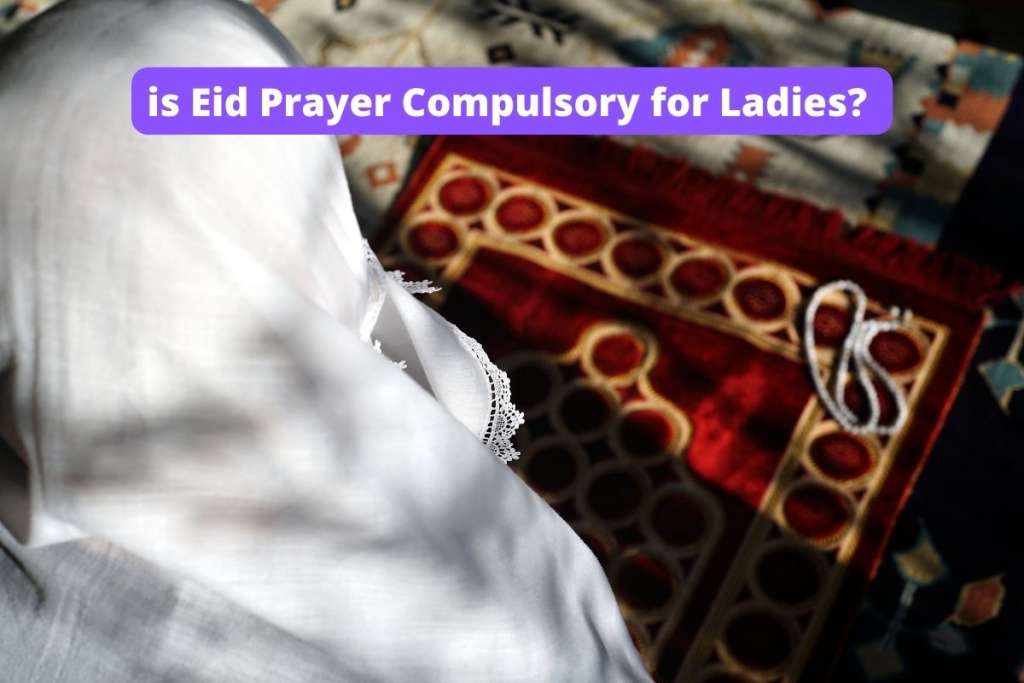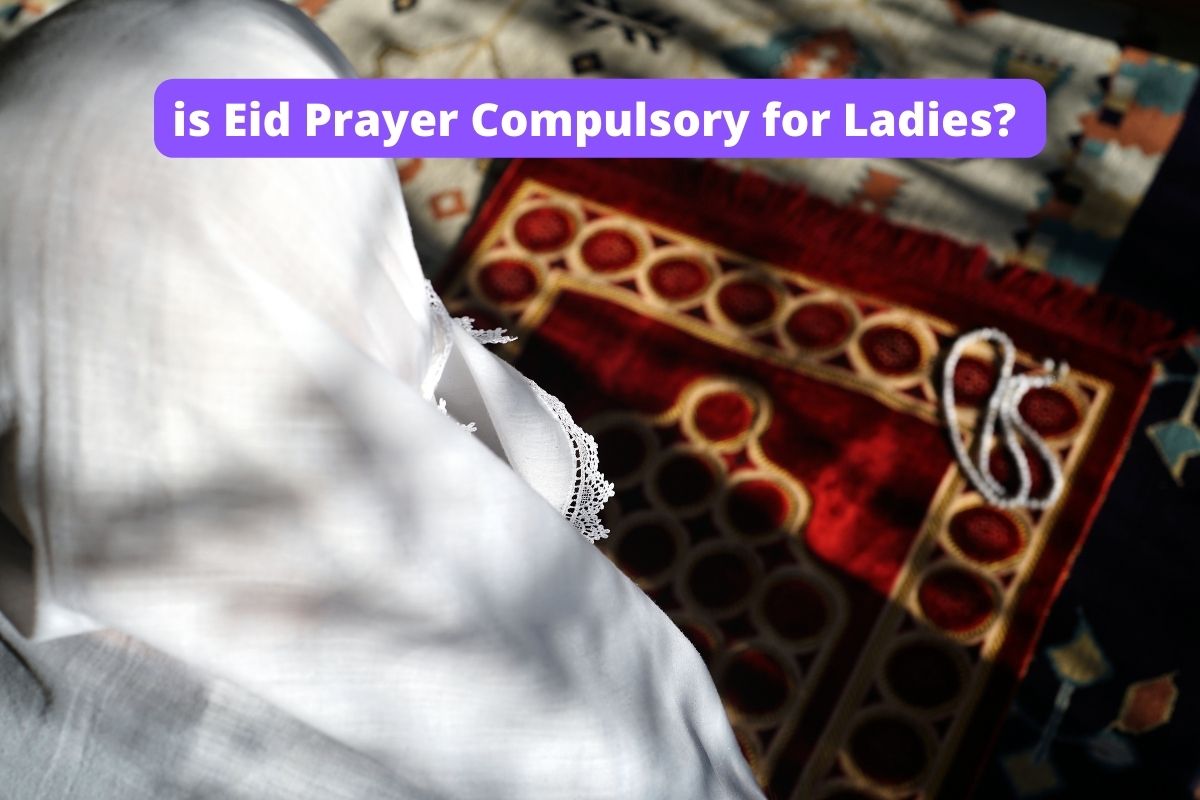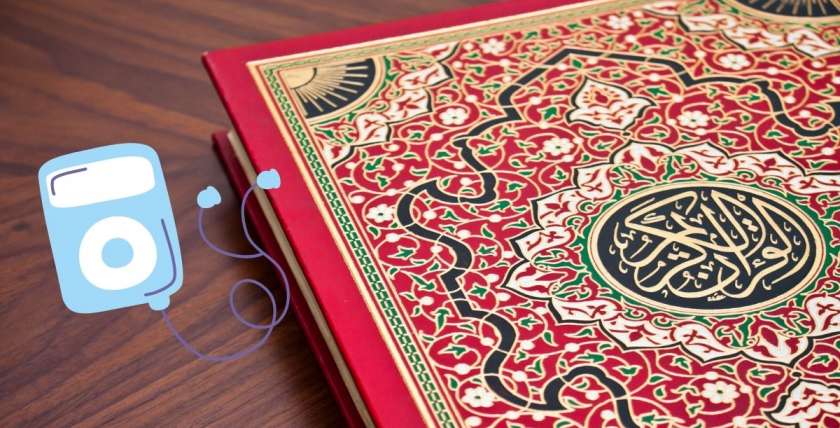Eid prayer is a prayer where all people gather in mosques or open places to pray, as the prophet instructed us to, but does that mean that it is compulsory for ladies? Well, let’s find out.
Is Eid prayer compulsory for ladies? No, Eid prayer is not compulsory for ladies, it is Sunnah. Women should pray Eid prayer in the Mosque or in the prayer place as the prophet (peace and blessing be upon his) instructed.
So, performing Eid prayer is not obligatory for women however it is a Sunnah.
Keep reading if you want to learn how to pray Eid prayer and when to pray it.
Is It Permissible for Women to Perform Eid Prayer at Home?

It is narrated that Umm ‘Atiyah said: “We were commanded (and in one report it says, he commanded us – meaning the Prophet (peace and blessings of Allah be upon him)) to bring out to the Eid prayers the adolescent girls and the women in seclusion, and he commanded the menstruating women to avoid the prayer-place of the Muslims.”
From this hadith, we understand that should pray Eid prayer at mosques or praying place.
Is there any prayer before or after Eid prayer?
There is no prayer to be performed before or after Eid prayer. And here are some hadiths to prove it:
Ibn Abbas narrated: “The Prophet (peace be upon him) went out (of his house) on the day of Fitr, prayed two Rakat, and did not pray before or after it.”
Ibnul-Qayyim said: “Neither he (peace be upon him) nor his companions prayed when they arrived at the Musalla – before the prayer or after it.”
Ibn Hajar said: “… In short, there is no confirmed sunnah prayer before or after the Eid prayer – contrary to those who compare it to the Jumu`ah prayer.”
How to pray Eid prayer step by step?
1- Make the niyyah (intention) before you start praying. The intention comes from the heart you don’t have to say it. Say the following: ‘I intend to pray two Rakah of the Eid al-Fitr prayer for Allah.’ By doing so you prepare yourself mentally so that you can concentrate.
2- Now you don’t pray on your own, follow the imam. Even if you know how to perform the salah on your own you shouldn’t move or speak before the imam. You are not racing with the imam, so listen to him and follow his lead.
3- When the imam raises his hands and says “Allahu Akbar”, you should do the same. Then you will recite the al-Istiftah Dua. You can learn all about Eid Takbeers here.
Afterward, the imam will say “Allahu Akbar” 3 times and you will repeat after him and raise your hands after each utterance. After raising your hands put them back down by your sides. “Allahu Akbar” means “The Lord is the most magnificent” or “Allah is the greatest.”. while al-Istiftah Dua is the dua that refers to starting the salah. There are multiple dua but here are one of them: غَيْرُكَ (Subhanaka Allahumma wa bihamdika wa tabarakasmuka, wa ta’ala jadduka wa la ilaha ghairuk).
4- Now put both your hands on your chest, place the right hand on top the left hand. The imam will now recite surah Al Fatiha and then a second Surah. The sunnah is to recite surah Al A’la in the first rakah. Listen to the imam carefully and try to focus.
5- When the imam finishes the surah he is reciting you will perform what is called Ruku, meaning that you will bow and place your hands on your knees and say “Subhaana rabiyal ‘adheem” three times. Try to make your back parallel to the ground and look at the ground. Then when you hear the imam saying “Sami Allahu liman Hamidah”, stand up again and say “Rabbana lakal Hamd”, and they both mean “Allah hears those who praise him,” and “Our Lord, praise be to You.
6- Now when the imam says “Allahu Akbar.” You will go into sujud. You get onto your knees with your forehead touching the ground and say “Subhaana rabiyal a’la” three times. Then you will sit and do another sujud. And this is the end of the first rakah.
7- The imam will say “Allahu Akbar” and you will stand back up. Then the imam will recite surah Al Fatiha and another Surah. The sunnah is to recite Surah Al Ghashiyah in the second rakah. During this listen carefully and try to focus.
8- When the imam raises his hands and say “Allahu Akbar”, you should do the same. Then you will recite the al-Istiftah Dua. Afterwords the imam will say “Allahu Akbar” 3 times and you will repeat after him. Then go to ruku after the third “Allahu Akbar”. Now say “Subhaana rabiyal ‘adheem” three times. Try to make your back parallel to the ground and look at the ground. Then when you hear the imam saying “Sami Allahu liman Hamidah”, stand up again and say “Rabbana lakal Hamd”, and they both mean “Allah hears those who praise him,” and “Our Lord, praise be to You.
9- when the imam says “Allahu Akbar.” You will go into sujud. You get onto your knees with your forehead touching the ground and say “Subhaana rabiyal a’la” three times. Then you will sit and do another sujud.
10- When you finish the second sujud sit and say the Tashahhud
Tashahhud is recited in arabic as follows:
التَّحِيَّاتُ لِلَّهِ وَالصَّلَوَاتُ وَالطَّيِّبَاتُ السَّلَامُ عَلَى النَّبِيُّ وَرَحْمَةُ اللَّهِ وَبَرَكَاتُهُ السَّلَامُ عَلَيْنَا وَعَلَى عِبَادِ اللَّهِ الصَّالِحِين. أَشْهَدُ أَنْ لا إِلَهَ إِلَّا اللَّهُ وَأَشْهَدُ أَنَّ مُحَمَّدًا عَبْدُهُ وَرَسُولُهُ
اللَّهُمَّ صَلِّ عَلَى مُحَمَّدٍ وَعَلَى آلِ مُحَمَّدٍ كَمَا صَلَّيْتَ عَلَى إِبْرَاهِيمَ وَعَلَى آلِ إِبْرَاهِيمَ إِنَّكَ حَمِيدٌ مَجِيدٌ. اللَّهُمَّ بَارِكْ عَلَى مُحَمَّدٍ وَعَلَى آلِ مُحَمَّدٍ كَمَا بَارَكْتَ عَلَى إِبْرَاهِيمَ وَعَلَى آلِ إِبْرَاهِيمَ إِنَّكَ حَمِيدٌ مَجِيد
Attahiyyaatu lillaahi wassalawaatu wattayyibatu. Assalaamu ‘alayka ayyuhan-Nabiyyi warahmatullaahi wabarakaatuh. Assalaamu ‘alyna wa ‘ala ‘ibaadillaahis saaliheen. Ash-hadu an laa ilaaha illallaah wa ash-hadu anna Muhammadan ‘abduhu wa rasooluh.
Allaahumma salli ‘ala Muhammad wa ‘ala aali Muhammad kama sallaita ‘ala Ibraaheem wa ‘ala aali Ibraaheem innaka Hameedun Majeed, wabaarik ‘ala Muhammad wa ‘ala aali Muhamaad kama baarakta ‘ala Ibraaheem wa ‘ala aali Ibraaheem innaka Hameedun Majeed.
Meaning: “All the compliments are for Allah and all the prayers and all the good things (are for Allah). Peace be upon you, O Prophet, and Allah’s mercy and blessings (are on you). And peace be upon us and on the good (pious) worshipers of Allah. I testify that none has the right to be worshipped but Allah and that Muhammad is His slave and Apostle.
O, Allah! Praise Muhammad, and on the family of Muhammad, as You Praised Ibraaheem and the family of Ibraaheem; you are indeed Worthy of Praise, Full of Glory. And send blessings on Muhammad, and on the family of Muhammad, as you sent blessings on Ibraaheem, and the family of Ibraaheem; you are indeed Worthy of Praise, Full of Glory.”
11- When you finish the Tashahhud turn your face to the right and say “Assalamu alaikum wa Rahmatullah.” Then turn your face to the left and repeat the prayer again.
For more information or if you have any question visit our website, Quranonline.com






